The use of blockchain in industrial IoT has not been growing significantly but is expected to grow in the years to come!

The BTS protocol revolves around Witnesses (formerly Delegates) who act as specialized nodes, processing network confirmations and governance functions, among other things.
So when talking about Bitcoin or blockchain with people, it’s important to mind this terminology.

It's as if PayPal called the internet PayPal on which the PayPal protocol was run to transfer PayPal currency.
If you send someone a file, it is always a copy of your file, which means you and the receiver are both in possession of the file. As we already stated, that is ideal for sharing information, but not applicable for money, certificate of ownership, and so forth. And the latter is exactly what blockchain enables: digitalizing and transferring such values.
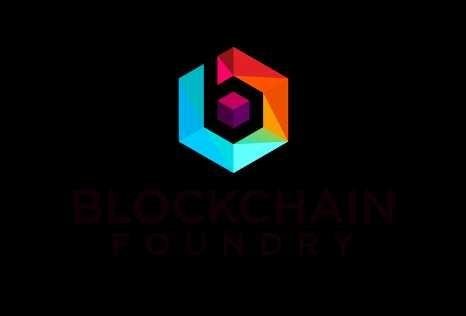
A blockchain is a public ledger of all bitcoin transactions that have ever been executed. A block is the “current” part of a blockchain which records some or all of the recent transactions, and once completed, goes into the blockchain as permanent database. Each time a @block gets completed, a new block is generated.

It is now a known fact that the use cases of blockchain have been increasing by the day. There has increasingly been a large number of ways in which real-world assets could be linked to the blockchain and traded digitally. A proof-of-concept is being run for trading commodities (like physical bars of gold, silver and diamond) after being authenticated via blockchain, establishing ownership of real-estate properties, to provide election voting, etc.
Blocks are linked to each other (like a chain) in proper linear, chronological order with every block containing a hash of the previous block. To use conventional banking as an analogy, the blockchain is like a full history of banking transactions. Bitcoin transactions are entered chronologically in a blockchain just the way bank transactions are.
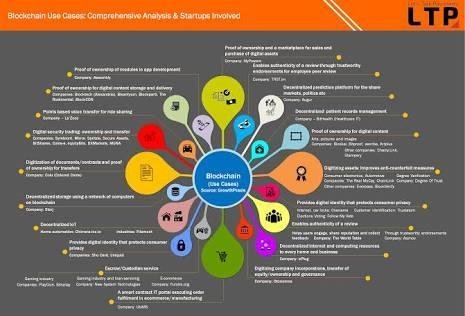
The major focus is on non-financial use cases of blockchain. The non-financial use cases of blockchain have been hot in the recent past with more than 50+ startups coming up in this space. Blockchain Capital (formerly known as @crypto Currency Partners) very recently managed to raise US$7 million towards their second investment fund for bitcoin and blockchain-related ventures specifically focusing on non-financial use cases.
Meanwhile, blocks, are like individual bank statements. The full copy of the blockchain has records of every bitcoin transaction ever executed. It can thus provide insight about facts like how much value belonged to a particular address at any point in the past. Some developers have begun looking at the creation of other different blockchains as they do not believe on depending on a single blockchain. Parallel blockchains and sidechains allow for tradeoffs and improved scalability using alternative, completely independent blockchains, thus, allowing for more innovation.
To give an example of the blockchain concept, we found out about a product called Gyft, an online platform for gift cards where you can buy, sell and redeem gift cards. It is a partnership between 44-year-old merchant acquirer/processor/FinTech firm First Data and blockchain infrastructure provider Chain to offer gift cards for SMBs using blockchain.
The product will be rolled out soon and will become a solid example of blockchain-based innovation that has nothing to do with bitcoin. Why does it make sense? A majority of the SMBs don’t have gift card programs and therefore, POS installed at SMBs don’t accept them. It is costly to offer a gift card program and difficult to see the immediate benefits. It’s basically postponed gratification for a retailer, but large retailers understand it very well and have gift cards acceptance. Blockchain allows Gyft to offer a great gift card solution to SMB customers.
Holy Shit this is amazing and this is all from last year??? dude wtf why isnt the real dan more like this?

Serica brings software engineering, cryptofinance, financial custody and blockchain @technology to traditional custodian finance. It allows entrepreneurs to establish their business legitimacy through the largest network of verified customers in order to grow conversions, registrations, memberships and average order sizes. Serica’s Secure Socket Layering Technology encrypts all communications between a user’s personal wallet and Serica. Serica uses the blockchain in order to track and record every purchase of medical marijuana, providing businesses an easy way to accept payments online.
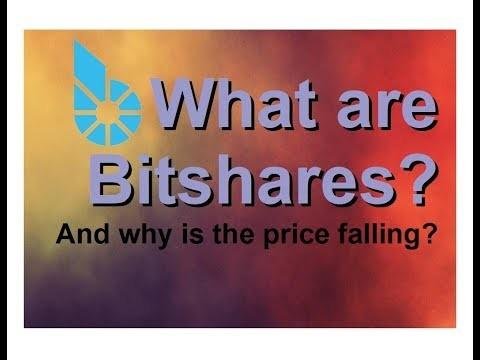
The trading platform is another such segment where investors are optimistic about the use of @blockchain. Next in the list of attractive segments is P2P transfer using blockchain technology.
Financial institutions can build a shared flat ledger using blockchain technology managed by trusted processing nodes. Using digital signatures, financial intermediaries can update the ledger to complete a business transaction. The shared ledger needs to be encrypted to protect the confidentiality of the data. Key processes involved in executing a trade – such as security issuance, trading, clearing, and settlement – can be redesigned and simplified using such a solution.
In the case of the non-financial domain, there are a few segments that investors and large conglomerates are eyeing. Smart contracts is one segment where investors are betting. Companies who operate in this segment were able to raise significant amounts of funding and were able to gain investors’ trust. The gold & silver trading segment is another such segment which is in the watch list of several investors. The use of blockchain in industrial IoT has not been growing significantly but is expected to grow in the years to come. There are a few segments where we have seen multiple players operating, but the growth of these segments is stagnant or low. Digital content, document storage and delivery is the segment where we have seen multiple companies operate, but this segment has failed to gain investor confidence.
In this video I show you how to create a wallet on the @Bitshares Decentralized Exchange. Go here to get your wallet.
Industry alignment will be required on certain design point, such as: whether systems are completely open (as with @Bitcoin) or use permission-based access requirements; the principles for suitability in interacting with the ledger; and the interoperability between different networks, which may potentially run different consensus protocols and safeguards against coding errors, thus creating unforeseen knock-on effects.
http://wallet.gobitshares.com
“Blockchain technology continues to redefine not only how the exchange sector operates, but the global financial economy as a whole.” – Bob Greifeld, Chief Executive of NASDAQ
Blockchain has been one of the most awe-inspiring innovations since the Internet came into existence. Blockchain technology basically allows everyone to hold and make transactions as strangers but in a completely transparent manner. There is no mediator in between two people making the transaction, and the entire process becomes easier and cheaper. This concept can be applied to the entire digital world making any kind of exchange/transactions secure (and not just bitcoin). This article will take you through numerous such business models and companies that are beginning to sprout based on blockchain tech.
“In financial markets there’s always a mechanism to correct an attack. In a blockchain there is no mechanism to correct it — people have to accept it.”- Robert Sams, founder and chief executive of London-based Clearmatics.
“Blockchain technology has the ability to optimize the global infrastructure to deal with global issues in this space
much more efficiently than current systems.” – Marwan Forzley, Founder of Align Commerce
Everyone is talking about blockchain, the new technology in the FinTech Industry.
The diamond industry is one of the biggest natural resource industries and makes a substantial part of the GDP in African countries and other major diamond-miners. The hallmark of the industry is that it is highly criminalized. Stones are small and easy to hide and transport. The best part for criminals is that transactions can be made confidentially and the sell returns the value over years. Diamonds are known to be involved in money laundering and financing of terrorism on a truly massive scale around the world.

The concept of blockchain has energized the financial services industry globally. The concept has already brought a disruption in the financial industry. LTP brings to you the overview, technology, application areas and use cases of @blockchain.

blockchains are not only used for recording economic transactions but are also being used as ledgers for many other purposes. Here, it is important to mention that the information in each block is shared and no one can alter or corrupt the data. There are millions of computers across the globe hosting these blockchains. Due to increasing benefits of blockchain technology, its use is also increasing. Following are some benefits of blockchain technology.
When a transaction is saved in the blockchain, it is duplicated across all nodes in the network. That’s why we talk of blockchain as distributed ledger technology, a ledger of transactions, distributed across a computer network. Transactions are bundled in one block before they are validated by other nodes. Once the network reached consensus about the validity of these transactions, the block is appended to the existing chain of blocks. The block stores the validated transactions together with a hash and a reference to the previous block. Stored transactions cannot be undone.
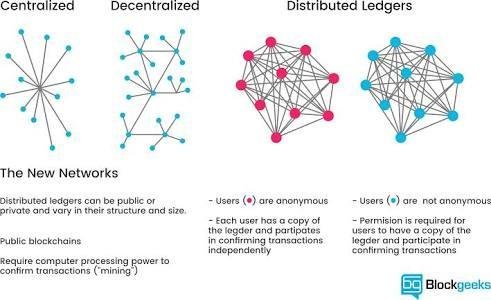
Occasionally a book comes along that changes the global discourse. This is likely to be one of those books. Blockchains are at the heart of the Fourth Industrial Revolution and the Tapscotts lucidly explain how and how to capture the opportunity and avoid the dangers.
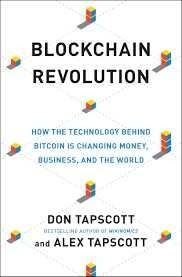
The blockchain is an undeniably ingenious invention – the brainchild of a person or group of people known by the pseudonym, Satoshi Nakamoto. But since then, it has evolved into something greater, and the main question every single person is asking is: What is Blockchain?
This will be the first book to explain why blockchain technology – a truly open, distributed, global platform – will fundamentally change what we can achieve online, how we do it, and who can participate.
Let’s take a consortium of fifteen financial institutions as an example, each with a node. From this group of fifteen, there are ten nodes that need to sign each block before it is valid. You could say that these ten take ownership of the data in the blockchain. They decide which transactions are valid and which ones are not.
Blockchain Technology? A Step-by-Step Guide For Beginners.
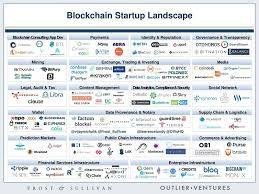
Bitcoin has been called “digital gold,” and for a good reason. To date, the total value of the currency is close to $9 billion US. And blockchains can make other types of digital value. Like the internet (or your car), you don’t need to know how the blockchain works to use it. However, having a basic knowledge of this new technology shows why it’s considered revolutionary. So, we hope you enjoy this, what is Blockchain guide.
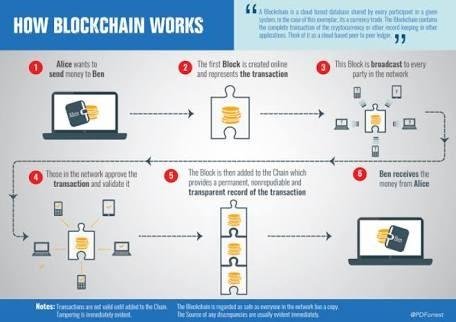
Information held on a blockchain exists as a shared — and continually reconciled — database. This is a way of using the network that has obvious benefits. The blockchain database isn’t stored in any single location, meaning the records it keeps are truly public and easily verifiable. No centralized version of this information exists for a hacker to corrupt.
Blockchain technology is like the internet in that it has a built-in robustness. By storing blocks of information that are identical across its network, the blockchain cannot:
--Be controlled by any single entity.
--Has no single point of failure.
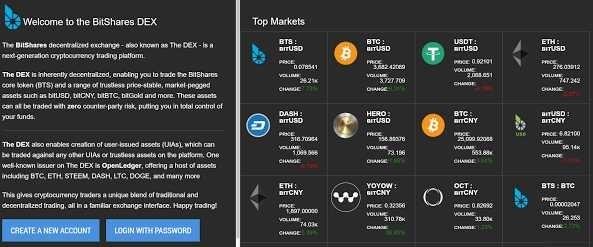
A block is currently created every 3 seconds, about the average block time of Ripple. The network currently handles 3 transactions per block.  )
However, the BTS network is a complicated system capable of many higher order functions, similar to Ethereum, and currently handles about 2.8 operations per second or about 8.5 operations per block.
>quote
Larimer believed that PoS is superior to Proof of Work (PoW) because the reliable node stakeholders of BTS have the best interests of the coin and security at heart. The developer was quick to admit that the consensus method is imperfect, PoS is vulnerable to 51% attack via shareholders, but believed the cost of acquiring 51% of BTS is much greater and acquiring 51% of the hashing power on a PoW system.

However, the BTS network is a complicated system capable of many higher order functions, similar to Ethereum, and currently handles about 2.8 operations per second or about 8.5 operations per block.
>quote
Larimer believed that PoS is superior to Proof of Work (PoW) because the reliable node stakeholders of BTS have the best interests of the coin and security at heart. The developer was quick to admit that the consensus method is imperfect, PoS is vulnerable to 51% attack via shareholders, but believed the cost of acquiring 51% of BTS is much greater and acquiring 51% of the hashing power on a PoW system.
 )
The network uses a deflationary supply system, with an available current supply of ~2.6 billion and a likely max supply of ~3.7 billion. BTS can also be burned, reducing total supply and increasing value for investors.
)
The network uses a deflationary supply system, with an available current supply of ~2.6 billion and a likely max supply of ~3.7 billion. BTS can also be burned, reducing total supply and increasing value for investors.
The BTS higher order functions allow for the creation of distributed autonomous companies (DACs), which are similar the decentralized autonomous organizations (DAOs) created on Ethereum, and allow for rules based entities using smart contracts. https://steemit.com/blog/@alfa-good/tuesday-17-oktober-2017-posting-in-the-morning-a-pleasant-time-because-of-the-amazing-idea-20171017t5445687z  )
The main difference between the two being a DAC pays dividends whereas a DAO is a non-profit which can also earn money. DACs are also being promoted as a key component of EOS.

The main difference between the two being a DAC pays dividends whereas a DAO is a non-profit which can also earn money. DACs are also being promoted as a key component of EOS.
 )
The exchange is location-neutral and the speed of the transaction does not improve based on your proximity to a centralized entity. The exchange also makes use of a currency pegged to USD$1.00, BitUSD, similar to Tether.

The exchange is location-neutral and the speed of the transaction does not improve based on your proximity to a centralized entity. The exchange also makes use of a currency pegged to USD$1.00, BitUSD, similar to Tether.
 )
The bill was introduced to the Senate in Carson City on March 20, and sponsored by Republican Senator Ben Kieckhefer. While the legislation has been amended twice, it passed the vote 41 to 0.
Kieckhefer states that the bill will help ensure the State keeps pace with technological advancements, “and provide a legal framework for people using a blockchain to not do so in a legal gray area.”
“Senate Bill 398 is an offshoot of several efforts I worked on in the 2015-2016 Interim to ensure Nevada has an environment welcoming and inclusive of startups,” the State Senator from District 16 adds. “Entrepreneurs have been working on a package of legislation to ensure that, instead of just incentivizing large companies to relocate to the State, we have policies incentivizing them and smaller companies to start and grow here.”
>quote
“Local governments cannot impose taxes, fees or other requirements relating to the use of blockchain or smart contracts. Governments also cannot require a license or permit to use those methods.”
While the DEX has been a market leader in decentralized exchange development, the current website appears to be down, and there are talks of a rebranding and update on the cards. Volume and liquidity are also notoriously low, often with large spreads.
Centralized exchanges are superior by most metrics except for custodial risk, which has been a major problem for dozens of exchanges, like Mt. Gox, Bitfinex, and BTCe. Centralized exchanges create a vast honey pot where the exchange security itself is much less secure than the cryptocurrency being traded.
A harsh and unfriendly regulatory environment may one day push all cryptocurrency traded volume to decentralized exchanges, which have no central point of failure and cannot be shut down by a government entity.
)
The bill was introduced to the Senate in Carson City on March 20, and sponsored by Republican Senator Ben Kieckhefer. While the legislation has been amended twice, it passed the vote 41 to 0.
Kieckhefer states that the bill will help ensure the State keeps pace with technological advancements, “and provide a legal framework for people using a blockchain to not do so in a legal gray area.”
“Senate Bill 398 is an offshoot of several efforts I worked on in the 2015-2016 Interim to ensure Nevada has an environment welcoming and inclusive of startups,” the State Senator from District 16 adds. “Entrepreneurs have been working on a package of legislation to ensure that, instead of just incentivizing large companies to relocate to the State, we have policies incentivizing them and smaller companies to start and grow here.”
>quote
“Local governments cannot impose taxes, fees or other requirements relating to the use of blockchain or smart contracts. Governments also cannot require a license or permit to use those methods.”
While the DEX has been a market leader in decentralized exchange development, the current website appears to be down, and there are talks of a rebranding and update on the cards. Volume and liquidity are also notoriously low, often with large spreads.
Centralized exchanges are superior by most metrics except for custodial risk, which has been a major problem for dozens of exchanges, like Mt. Gox, Bitfinex, and BTCe. Centralized exchanges create a vast honey pot where the exchange security itself is much less secure than the cryptocurrency being traded.
A harsh and unfriendly regulatory environment may one day push all cryptocurrency traded volume to decentralized exchanges, which have no central point of failure and cannot be shut down by a government entity.
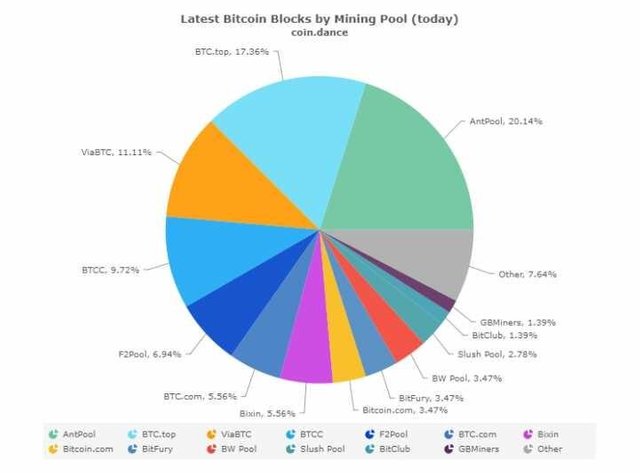
A protocol feature called “PrivateSend” lends DASH to be labelled as a ‘privacy coin,’ along with Monero and ZCash. PrivateSend is essentially a coin mixing service which combines identical inputs from multiple users into a single transaction with several outputs.
The cryptocurrency uses a two-tiered PoW (PoW) and Proof of Stake (PoS) consensus model. PoW mining verifies the ledger and receives most of the block reward. Only ~18,000,000 total DASH will ever be mined with block rewards decreasing by 7% a year until no rewards exist.
quote
The DASH network handling <10k transactions per day is underperforming for a currency with a ~USD$2.5 billion market capitalization. However, the PoS component partially contributes to the inflated market capitalization by removing DASH supply from trading supply on exchanges.
Although the 1000 DASH collateral in Masternode stake can be removed at any time, currently 4556 Masternodes soak 4,556,000 DASH or 60% from total supply.
However, the marketing and PR budget has increased substantially as the price of DASH has increased. This allows DASH to target further market penetration, increase adoption, and attract more speculative investment.
Technicals appear strongly bullish with a months long period of bullish consolidation ending soon. Near term targets are ~0.111BTC-0.121BTC with longer term targets of ~0.200BTC-0.240BTC.
“The main task is to define the concept of what is a cryptocurrency, whether a crypto currency is a financial instrument, “ Aksakov clarified. “This is important because it can have different tax consequences. Because transactions with financial instruments are not subject to VAT. If this is a different kind of product, then a value-added tax may arise.”
Taxation of cryptocurrencies is the main concern for the Finance Ministry, and it is an important issue in the Duma, at the Central Bank, and at some other government departments as well. The head of the Ministry of Communications, Nikolai Nikiforov, recently said that his department will “submit rules for circulation of cryptocurrencies to the government, the Central Bank and other financial institutions that will be responsible for the monetary component,” according to RBC. “Such operations should be taxed not with VAT or on profit, but taxed on personal income,” Nikiforov declared. His Ministry “will deal with technical issues.” “Bitcoin is unlikely to be fully legalized in Russia, since this technology is based on foreign encryption algorithms, and they are not recognized from the point of view of Russian jurisdiction.”
It is clear that regulators will pay close attention to the development and use of DLT in the regulated sector. Regulators have generally avoided regulating technology itself and have paid attention to the uses and products that may be promoted or developed across the technology platform. >quote The development team has since announced a much-improved version 2.0, acquired more funding, hired a larger team, and got to work. While their blog has been trickling details and hints about upcoming features, a launch date has only just been provided. According to OB1 CEO and Project Lead for OpenBazaar, Brian Hoffman, the version 2.0 launch will likely be in August this year, sandwiched in between the release of their upcoming smartphone app and an event they plan to hold for the community.  )
Dubbed “Crypto Is Currency Day,” the event will be some time in September. The company says that they will be holding the event in order to “highlight use cases for digital currencies worldwide” and “encourage users to build network value by spending some of their coins.”
)
Dubbed “Crypto Is Currency Day,” the event will be some time in September. The company says that they will be holding the event in order to “highlight use cases for digital currencies worldwide” and “encourage users to build network value by spending some of their coins.”
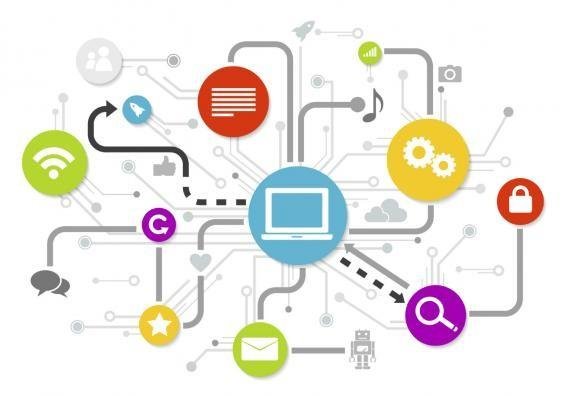
However, the first software release is an OpenBazaar mobile application that Hoffman says will be on the market “very soon.” Unlike a desktop or server installation of OpenBazaar, the mobile app would be primarily for shopping and secure communications. The CEO explained that while the software will be running a mobile only version of OpenBazaar version 2.0, users won’t be able to host stores with the app.
Whilst the market monitors potential regulatory developments, effective governance is the key to the successful implementation of distributed ledger technology to protect participants, investors and stakeholders whilst ensuring that the system is resilient in the face of systemic risk, privacy concerns and cybersecurity threats.
quote
The development of the regulatory approach is still unclear, but it is incumbent on the industry as a whole to monitor applications to which blockchains may be put and avoid products and processes that are abusive or will lead to systemic risk.
Otherwise, we can expect heavy-handed regulation that will limit the future development of the technology and the benefits it can provide.
@murny
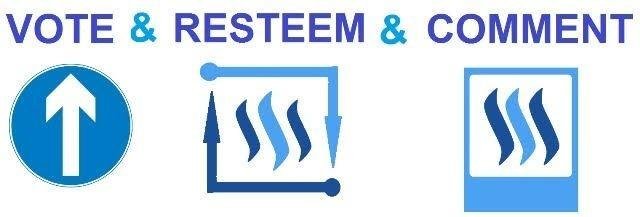
Ya definitely it will grow...like bitcoin grows up and its value goes very high...may steem also goes high soon